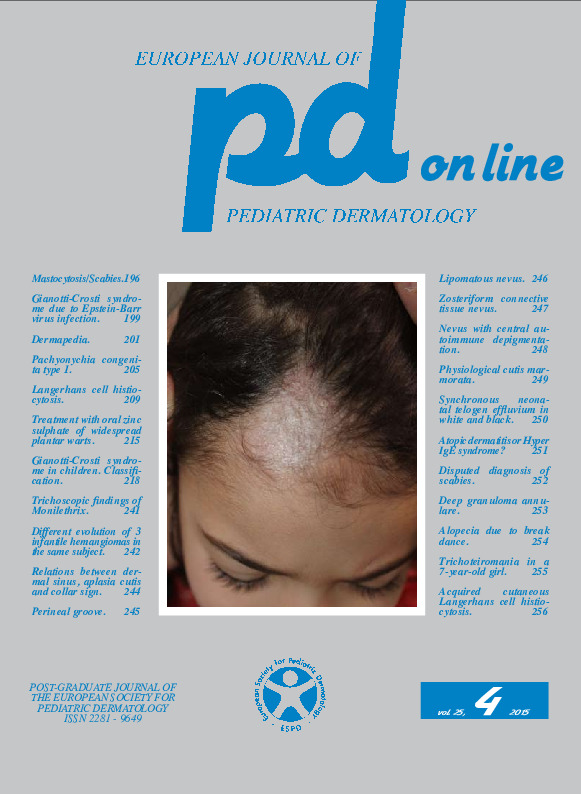Physiological cutis marmorata
Downloads
DOI:
https://doi.org/10.26326/2281-9649.25.4.1177How to Cite
Bonifazi E. 2015. Physiological cutis marmorata. Eur. J. Pediat. Dermatol. 25 (4): 249. 10.26326/2281-9649.25.4.1177.
pp. 249
Abstract
Many normal babies and even more prematures (2) have a greater evidence of the deep dermal venous plexus especially when exposed to cold; this physiological cutis marmorata is due to arterial vasoconstriction with venous vasodilatation. Cutis marmorata is more persistent or becomes evident in other stages of life in subjects with acrocyanosis, in children with hypothyroidism, Adams-Oliver syndrome, trisomy 21 and other congenital conditions (1). In the newborn it should be distinguished from cutis marmorata telangiectatica congenita, often segmental or asymmetric and more severe being able to go as far as ulcerative necrosis. The differentiation from acquired idiopathic livedo reticularis and livedo racemose, which usually affect the adult, is easier.Keywords
Cutis marmorata, newborn

